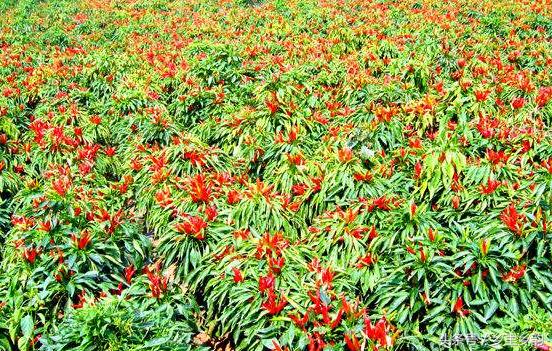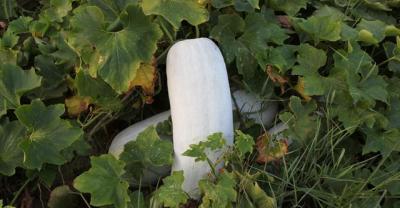This is how experts teach you to master the new planting techniques of Chaotian pepper.
Chaotian pepper, also known as small pepper, is currently a wide range of agricultural and sideline products, with good market prospects. Generally, the output of Chaotian pepper per mu is about 1000 jin, the potential to increase production is greater, the price is relatively stable, and the income of pepper farmers is considerable. Farmers are more enthusiastic about planting Chaotian pepper, so in order to let more pepper farmers increase their income, it is necessary to improve pepper yield and pepper quality, and the yield multiplied by the selling unit price is equal to farmers' income.
Let's talk about the yield first. Pepper production comes from pepper fruit. If you want to have more pepper fruit, you need to let pepper blossom more. If you want pepper to blossom more, you need to let pepper branch more. If you want pepper to branch more, you need to let pepper take root more. This means that only pepper has more roots, pepper can branch more, only pepper has more branches, pepper can blossom more. Pepper can bear more fruit, but the yield is high when the result is too much.
The second is the sale price looks at the quality, the quality is good, the color is red, the fruit is big, the finish is strong, the spicy taste is strong, is the top grade, the sale price is naturally much higher.

So what kind of method can be used to grow Chaotian pepper to achieve the above goal?
1. Pepper seedling: pepper is an economic crop that needs seedling transplanting. Please select a ventilated and sunny joint land and arrange it into a border one meter wide. The border length is determined according to the planting area (generally 10 square meters of seedbed, which can plant 667 square meters of land per mu).
2. The seedling raising time of spring pepper is early February, the seedling age is 70 days, the seedling time of wheat interplanting pepper is mid-March, and the seedling age is 60 days. Mu uses pepper seed 35 MULTHUE 50g.
3. After the seedling bed is arranged, directly irrigate. After irrigation, insert the bamboo pyrene bow, cover it with plastic film, and steam the bed to raise the ground temperature for 3 days. (no fertilizer is used in the border, but pesticides must be used). Put the purchased pepper seeds in the sun for 1-2 days, then soak the seeds in trace element nutrient solution for 12 hours, uncover the plastic film and begin to sow the seeds while the temperature is high at noon, add the soaked seeds into 1000 times fine sand and sow them in the border more than three times before you can spread rhyme, then cover with 1 cm thick fine sand, put on the seedbed herbicide, cover with plastic film, and compact around. In order to avoid strong wind blowing broken plastic film, can not play the role of heat preservation and moisturizing, pepper seedling emergence temperature should not exceed 32 degrees, seedling bed temperature after emergence should be controlled at 15 to 28 degrees.
4. When the seedbed needs to be watered, please apply no-tillage and no-tillage fertilizer to the seedbed, watering the small water frequently and applying less fertilizer for raising seedlings.
5. Pepper seedlings may have quenching disease, anthracnose and soft rot under the influence of temperature, which can be sprayed with pepper actinomycetin and azoxystrobin or carbendazim fungicides.
6. When the pepper seedlings grow to 20 cm high, cut off the main head of the pepper seedlings and let them branch as soon as possible, which is easier, more convenient and faster than in the field. When the pepper seedlings grow to a small fork, you can transplant them in the field. Remember to send a companion fertilizer to the pepper seedlings before transplanting, that is to add nine raw gold to no-tillage fertilizer and spray enzyme to add leaf fertilizer, and you can pull up the seedlings and transplant one day later. According to the row spacing prepared by the farmers themselves, a tree with a row spacing of 15murl 20 cm, or about 1.2 to 15000 trees per mu of land, should not be too dense, affecting branches, flowering, fruit, and coloring of chili peppers. After transplanting, enough transplanting water should be poured to allow pepper seedlings to survive healthily and enter the growing period.
2. New techniques for field water and fertilizer management of hot pepper.
7. In order to achieve the goal of multi-rooting, multi-branching, multi-flowering and multi-fruiting of hot pepper, we need to reform the concept of fertilization. use Weiwo brand no-tillage fertilizer to adjust land consolidation, control land pollution, prevent pepper stubble, resist saline-alkali soil damage, deepen plough layer, conserve water and fertilizer, prevent fertilizer volatilization, prevent fertilizer infiltration, prevent fertilizer loss, make our land naturally loose, and enhance soil permeability. Is the main purpose of making chili peppers take more roots. Because the rooting ability of pepper is weak, land consolidation directly affects the rooting of pepper, so adjusting land consolidation is an urgent task, and it is also a necessary measure to increase yield and income of pepper.
8. To plant chili peppers in spring, 1.5 sets of no-tillage fertilizers (80 jin for a bag of nitrogen, phosphorus and potassium, and 80 jin for a bag of high-efficiency bio-organic fertilizer, counted as a set of fertilizer) are applied to each mu of chili, and 50 jin of quicklime powder is used for continuous cropping land, so there is no need to buy all kinds of animal manure, and then plough and transplant.
9. The transplanting time of spring pepper is from April 20 to May 5, when the planting is finished, the herbicide in the pepper field is covered with plastic film, and the transplanting time of interplanting hot pepper in wheat is from May 20 to before wheat harvest. After the wheat is harvested, one set of no-tillage fertilizer is added to each mu of wheat, and then the herbicide in the pepper field is applied.
10. Disease and pest control of hot pepper, pepper is prone to rot, root rot, scab, leaf spot, black spot, purple spot, brown spot, sunburn, black pox, rot, bud drop, flower drop, fruit drop, leaf drop and lobular virus disease, wrinkle virus disease, mosaic virus disease, jue leaf virus disease, leaf curl virus disease, yellow leaf virus disease, skin grafting virus disease, chicken leg virus disease and so on. There are also aphids, cotton bollworm, diamondback moth, yellow diamondback moth, thrips, leafhoppers, bug bugs, jumping beetles, drill beetles, white planthoppers, gray planthoppers, green planthoppers, black planthoppers, red spiders, yellow spiders, white spiders and so on. It is very difficult for our farmers to cure these diseases and insect pests, but they will also affect the yield and quality of chili peppers. Therefore, it is suggested that farmers should use bifenthrin and avermectin to control all kinds of insect pests. Chlorobromoisocyanuric acid or azoxystrobin is used to control all kinds of diseases, combined with enzyme Tianle, spraying once a month, especially after the herbicide in the corn field around the pepper field is finished. Pepper enzyme must be sprayed once to relieve the harm of herbicide in corn field to pepper, because the elegant fumigation effect of herbicide in corn field is strong, far and harmful.
11. In the budding and fruiting period of pepper, it is best to apply one high potassium content of Tianjiusheng gold in no-tillage and flushing fertilization, so as to promote the fruit setting and expansion period of pepper to prevent the loss of fertilizer and prevent the loss of leaves, buds, flowers and fruits. The application must be finished before the Beginning of Autumn, because August 10th of each year is the peak period of pepper bud drop, which lays a solid foundation for increasing yield. The pepper managed in this way has many fruits, large fruit, thick skin and many seeds, red color, bright light and sufficient weight, so that farmers can obtain the ideal yield and price, and the goal of increasing production and income can be successfully realized.
- Prev

Preoperative common sense necessary for dental implants with installment payment
Recently, a popular article on the Internet is that the price of dental implants is too high for most patients to accept the high price, and then the clinic launched for these reasons.
- Next

Which is better, implant teeth or porcelain teeth?
Which is better, implant teeth or porcelain teeth? Teeth are very important to us, if the loss of teeth not only affects the appearance, but also affects the health of the mouth.
Related
- Fuxing push coffee new agricultural production and marketing class: lack of small-scale processing plants
- Jujube rice field leisure farm deep ploughing Yilan for five years to create a space for organic food and play
- Nongyu Farm-A trial of organic papaya for brave women with advanced technology
- Four points for attention in the prevention and control of diseases and insect pests of edible fungi
- How to add nutrient solution to Edible Fungi
- Is there any good way to control edible fungus mites?
- Open Inoculation Technology of Edible Fungi
- Is there any clever way to use fertilizer for edible fungus in winter?
- What agents are used to kill the pathogens of edible fungi in the mushroom shed?
- Rapid drying of Edible Fungi

